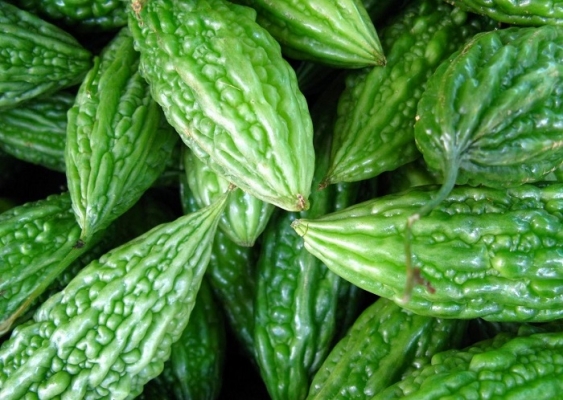Punjab Karela-15: It has smooth, serrated, green leaves. Green and pubescent stem. Long vines with smooth, serrated, dark green leaves. Fruits have a matt look and a dark green colour. It has a mediocre level of resistance to bitter gourd yellow mosaic disease. The yield is 51q/acre on average.
Punjab Kareli-1 (2009): Vines are long, according to Green, smooth, and serrated leaves are present. Its fruits are ridged, long, and green. First fruit harvest occurs 66 days after planting. The average production is 70 q/acre, and one fruit weighs roughly 50g.
Punjab Jhaar Karela-1 (2017): Its medium-length vines have green leaves with serrations. Fruits are aesthetically pleasing green, soft, spindle-shaped, and ideal for slicing during cooking. It is immune to viruses and root knot nematode infections. It yields 35 q/acre on average.
Older varieties
Punjab-14 (1985): It has little vines. Fruit is pale green and weighs approximately 35g. Ideal for planting in the spring and during periods of heavy rain. 50 q/acre on average is the yield.
Other Varieties
Arka Harit: Fruits have smooth, regular ribs, a short, spindle-shaped shape, a green colour, and a mild bitterness. 48q/acre of yield. This variety has been released by IIHR Banglore.
Pusa Vishesh: This variety has been released and recommended for cultivation as a summer season crop by the I.A.R.I., New Delhi. The vine is dwarf and bushy and easy to manage. The fruits are attractive green, fusiform with many irregulars broken smooth and glossy ridges on the surface. They are medium long and thick. It is early in maturity and takes about 55 days to come to harvest after sowing.
Other state varieties:
CO 1: The variety has medium sized fruit which are long and dark green in color. The fruits have an average weight of 100-120 gm. It gives an average yield of 5.8 t/acre and the variety matures in 115 days.
COBgoH 1: The variety matures in 115-120 days and gives an average yield of 20-21 t/acre.
MDU 1: The fruit are 30-40 cm in length and matures in 120-130 days. It gives an average yield of 13-14 t/acre.
Preethi and Priya are the varieties that are mainly grown.
















